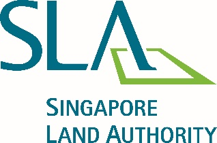"Charmingly Changi" an ideas competition for Changi Point


6. Individuals or teams can participate in the ideas competition. There are two competition topics. The first is a ‘Concept Master Plan for Changi Point’, which challenges participants to formulate a concept master plan to guide the enhancement of Changi Point. Participants must demonstrate the balance between retaining the quiet and laid-back character of the area and at the same time, enabling enhancements that will increase the attractiveness of Changi Point. The master plan shall provide a strategy to differentiate Changi Point from other recreational or lifestyle nodes in Singapore, incorporating concepts for the adaptive reuse of buildings, inclusion of community spaces and improvement of public accessibility and infrastructure.
Singapore Land Authority
Urban Redevelopment Authority
15 April 2021
ANNEX A
Location
Changi Point is located at the eastern end of Singapore, bounded by the Straits of Johor, Loyang Avenue, Old Pier Road, and Telok Paku Road. The area for the Ideas Competition is approximately 42 ha within Changi Point, bounded by Loyang Avenue and Changi Air Base (West) to the south and Changi Golf Club to the east.

Background of Changi Point
PAST
In the 1800s, thick vegetation covered most of Changi Point. In 1926, the British army drew up plans to establish Changi Point as a military base for artillery batteries to protect Singapore’s eastern front of the Johor Straits. Construction of the military buildings and barracks began in 1927. These included administrative buildings, barracks, amenities and residences for military personnel. The siting and design of these military buildings respected the existing terrain as well as capitalised on views of the surroundings.
During the Japanese Occupation from 1942 to 1945, the Changi area and its barracks were used as prisoner-of-war (POW) camps up to 1944 when the POWs were moved to Changi Prison, with many of the interned put to work by the Japanese.
After WWII, the Royal Air Force (RAF) took over the airstrip and buildings at Changi Point to establish RAF Changi in 1946. An RAF hospital was also established in 1947 using Station Sick Quarters and a former barrack block. This eventually became the Old Changi Hospital. Additional residential buildings and recreational facilities were built in the spaces between the pre-war buildings at Changi Point to serve RAF soldiers and their families. These included improvements to the existing Officers’ Club and Yacht Club with swimming pools and a golf course added as well.
Following the withdrawal of the British military in 1971, the Singapore Armed Forces (SAF) took over most of the military administrative buildings and the remaining buildings were put to alternative recreational and residential uses.
Towards the east, a market was built in 1975 and a new public housing estate was completed by 1981 on the site of the existing Changi Village.
PRESENT
Changi Point today is a laid-back getaway for locals and tourists alike, who arrive to take a ferry to Pulau Ubin from Changi Village, or to enjoy the various recreational facilities including Changi Beach Club, and chalets under Civil Service Club and Singapore Armed Forces (SAF). F&B establishments at Changi Village, including the famous Changi Village hawker centre, are popular with residents of the area and visitors. Being a designated Tree Conservation Area (TCA), Changi Point is also home to numerous heritage trees which makes it popular among nature lovers.
Most buildings in Changi Point presently house clusters of commercial and residential properties.
ANNEX B
“Charmingly Changi” - Ideas Competition for Changi Point
Participants are invited to choose from either one or both of the following topics:
Participants who wish to participate in both topics should submit their proposals for Topic 1 and Topic 2 separately.
TOPIC 1: “CONCEPT MASTER PLAN FOR CHANGI POINT”
Topic 1 seeks to challenge participants to formulate a concept master plan to guide the enhancement of Changi Point. A balance must be achieved between retaining the quiet, laid-back, and rustic character of the local area and enabling enhancements that will increase the attractiveness and appreciation of Changi Point. This master plan should provide a clear and coherent structure for the enhancement of Changi Point as an attractive and differentiated recreational and heritage node with:
· Strategy for positioning of Changi Point: A strategy to differentiate Changi Point from other recreational or lifestyle nodes in Singapore should be proposed. The positioning should highlight and capitalise on the rustic qualities as well as the built and natural heritage of Changi Point.
· Uses and concepts for buildings (e.g. Old Changi Hospital, former military quarters etc.): A use mix should be proposed for the various clusters of buildings. The buildings could be repurposed sensitively for new recreational or lifestyle uses while retaining the tranquil character of the site. The retention of some or all of the existing uses could also be considered. Proposed uses should respect and respond sensitively to the site context and surrounding areas. Proposed uses should also be suitable for the typology of the buildings and consider how spaces around the buildings can be enhanced. Minor sensitive extensions to the buildings can be considered, where required. To retain the tranquil local character, the introduction of uses involving higher-activity levels or visitor footfall should be confined to localised areas only.· Inclusion of community spaces: Community spaces are to be identified and could be activated with programming that are in line with the character of the areas, and with the involvement of the various communities and stakeholders. The design of community spaces could also strive to repurpose structures in innovative ways.
· Sensitive development works: The buildings on site today reflect Changi Point’s rich history and should be retained as far as possible. Any proposed infill developments should be in line with the overall intent to retain the rustic charm, natural and built heritage of the area. Any infill developments should:
o Respect the scale and location of existing buildings;
o Integrate and respond to natural elements, such as mature trees;
o Preserve the existing biodiversity and environment; and
o Involve minimal earthworks and/or include approach for sensitive intervention.
· Strategies to improve connectivity to public transport nodes and enhance public accessibility: The streetscape at Changi Point is part of its unique charm and proposed infrastructure enhancements should respect the street character where possible. There is also potential to sensitively introduce dedicated pedestrian footpaths and cycling paths to connect the buildings, green spaces, and waterfront to facilitate appreciation and enjoyment of Changi Point. With the upcoming Loyang Station along the Cross Island Line (CRL), the proposals should aim to strengthen public accessibility and connectivity of visitors travelling between the public transport nodes, Changi Point and Changi Village. Enhancement to the overall active mobility accessibility, car-lite measures, and environmentally sustainable transport strategies should be proposed to promote walking, cycling and public transport in Changi Point and Changi Village. Enhancements can also consider sustainable design measures that respond to the environment.
TOPIC 2: “REPURPOSING OF OLD CHANGI HOSPITAL”
Topic 2 seeks to challenge participants to present innovative ideas to repurpose the Old Changi Hospital to give it a new lease of life while retaining the architectural features of the buildings. The proposal should include:
· Strategy for repurposing Old Changi Hospital: Old Changi Hospital has a multifaceted identity and image as part of Changi Point’s military past and Singapore’s WWII history. A strategy to repurpose Old Changi Hospital should consider how the multifaceted identity will feature in bringing the building back into use that respects and enhances its heritage significance. Proposals should also incorporate elements to promote the historical significance of site. Depending on the participant’s interpretation, Old Changi Hospital’s identity could be reflected, challenged, or highlighted. Participants should also assess and outline the challenges, as well as propose corresponding solutions to repurpose Old Changi Hospital.
· Uses for Old Changi Hospital: Participants should suggest possible uses for Old Changi Hospital and explain reasons for those uses as being the most appropriate. Proposed uses should consider the site context including the history, terrain, and context of the wider Changi Point area. Proposed uses should also be suitable for the scale and form of the buildings of Old Changi Hospital. To retain the tranquil local character, the introduction of uses involving higher-activity levels or visitor footfall should be located at strategic and localised areas only, including Old Changi Hospital.
· Design approach for retrofitting of Old Changi Hospital: Proposals should consider ways to retrofit the interiors while respecting its structural and architectural features. The proposal should also demonstrate the sensitive integration of old and new which could add to the distinctiveness and character of the building, while respecting the existing scale and siting of the buildings.
Proposals can include the redevelopment of the middle block (Block 161), if required, to facilitate innovative and suitable ideas. Such proposals should reflect the sensitive integration of the block with the retained buildings, with appropriate setbacks and localised connections.
· Supporting infrastructure: The introduction of uses for Old Changi Hospital may require new supporting infrastructure. The proposal should be comprehensive in considering the infrastructural requirements (if any), such as ramps, parking lots, and footpaths to support the uses. Proposals should involve sensitive interventions that minimise impact to the greenery and avoid the introduction of large structures.
As pedestrian access to the Old Changi Hospital are located on different levels, participants should consider enhancing pedestrian/cycling connectivity for visitors coming from the nearby public transport nodes along the public roads and Changi Village. Proposals can also consider ways to cater to varying levels of visitor mobility, such as creating barrier-free access. Such proposals should make Old Changi Hospital more accessible and attractive for the public and encourage the use of existing public transport modes.
The Jury will comprise representatives from the public and private sectors of various related disciplines. Three top prizes will be awarded for each category, with cash values as follows:
Category | Prize Money |
Open | 1st prize: $6,000 2nd prize: $4,000 3rd prize: $2,000 |
Tertiary | 1st prize: $3,000 2nd prize: $2,000 3rd prize: $1,000 |
